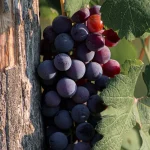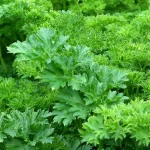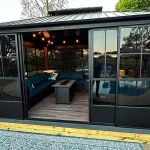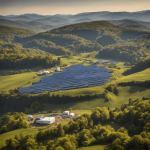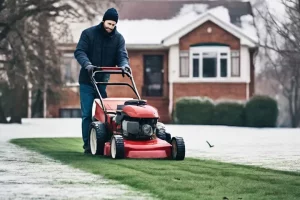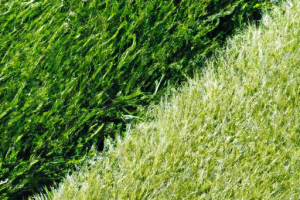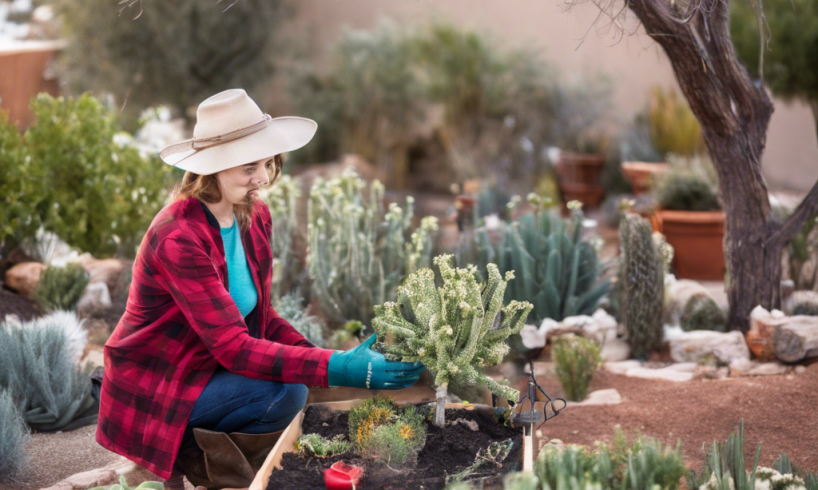
Unearthing the Secrets: Thriving Gardens Amidst Nevada's Winter Frost
As the fiery hues of autumn give way to the frosty days of winter, Southern Nevada transforms into a winter wonderland that challenges the green thumb of every gardening enthusiast. ‘Embracing the Chill: Winter Gardening in Southern Nevada' takes you on an enlightening journey into the heart of this unique, cold-season horticulture. Despite the region's reputation for hot, arid summers, the chill of winter presents a unique set of challenges and opportunities for those brave enough to venture into the garden.
This article will explore the art of winter gardening in Southern Nevada, offering practical advice and insightful tips to help you navigate the frost-laden landscape. We'll delve into the world of hardy plants that not only survive but thrive in the cold desert climate, and guide you through the process of preparing your garden for the winter months. From understanding the intricacies of Southern Nevada's climate to selecting the right tools and techniques for winter cultivation, this article promises to equip you with the knowledge to transform your winter garden into a thriving, frost-resistant oasis.
1. Winter Gardening is Possible in Southern Nevada
Despite the chill, winter gardening in Southern Nevada is not only feasible but can also be a rewarding endeavor. The region's unique climate allows for a variety of plants to thrive during the cooler months, providing an opportunity for year-round gardening.
2. Selection of Appropriate Plant Varieties
Choosing the right plant varieties is crucial for successful winter gardening. Cool-season crops such as kale, spinach, and root vegetables are well-suited for Southern Nevada's winter climate. These plants can withstand frost and can even become sweeter after a cold snap.
3. Importance of Timing and Preparation
Timing and preparation play a significant role in winter gardening. Planting should ideally be done in the fall to allow plants enough time to establish before winter. Additionally, preparing the soil with organic matter can help provide necessary nutrients and improve water retention.
4. Protection Measures for Plants
While many plants can withstand the cold, certain protective measures can help ensure their survival. These include using mulch to insulate the soil, installing row covers, and watering plants in the morning to help them resist freezing temperatures at night.
5. Environmental and Health Benefits
Winter gardening in Southern Nevada not only contributes to local biodiversity but also offers health benefits. Gardening can be a form of physical exercise and can also promote mental well-being. Plus, homegrown produce is fresher, tastier, and more nutritious than store-bought counterparts.
Adapting to the Cold: The Rise of Cool-Season Crops
One of the most notable emerging trends in Southern Nevada's winter gardening scene is the shift towards cool-season crops. As the name suggests, these are plants that thrive in cooler temperatures, typically between 40 and 75 degrees Fahrenheit. They include a variety of vegetables such as broccoli, carrots, peas, and spinach, as well as certain types of flowers like pansies and snapdragons.
The rise of cool-season crops can be attributed to a combination of factors. First, they offer a solution for gardeners who want to keep their gardens productive throughout the winter months. Second, these crops are generally hardier and more resistant to pests, reducing the need for chemical treatments and making them a more sustainable choice.
The future implications of this trend are significant. As climate change continues to alter weather patterns, the ability to grow a wider variety of crops year-round could become increasingly important. Moreover, the popularity of cool-season crops could lead to a shift in local food systems, encouraging more year-round local food production and consumption.
Technology in the Garden: The Digitalization of Winter Gardening
Another emerging trend in winter gardening in Southern Nevada is the increased use of technology. From mobile apps that provide real-time weather updates and gardening tips, to advanced irrigation systems that conserve water, technology is revolutionizing the way people garden in the winter months.
One particularly innovative example is the use of smart greenhouses. These structures use sensors and automated systems to control temperature, humidity, and light levels, creating the optimal conditions for plant growth regardless of the weather outside. This allows gardeners to grow a wider variety of plants, including those that wouldn't normally survive the winter months in Southern Nevada.
The potential future implications of this trend are vast. As technology continues to advance, it could make winter gardening more accessible and efficient, potentially leading to increased food production and sustainability. Moreover, the digitalization of gardening could also have educational benefits, providing a hands-on way for people to learn about science, technology, engineering, and math (STEM) concepts.
Embracing Native Plants: A Return to Roots
A third emerging trend in Southern Nevada's winter gardening scene is the increased interest in native plants. These are plants that have naturally evolved to thrive in the region's unique climate and soil conditions, making them a resilient and low-maintenance choice for winter gardens.
Native plants offer numerous benefits. They require less water and fewer nutrients than non-native species, making them a more sustainable choice. They also support local wildlife, providing food and habitat for a variety of birds, insects, and other animals.
The future implications of this trend could be profound. Embracing native plants could lead to more sustainable gardening practices, promoting biodiversity and helping to preserve Southern Nevada's unique ecosystems. Moreover, it could foster a greater appreciation for the region's natural heritage, encouraging people to learn more about the plants and animals that share their environment.
Understanding Nevada's Winter Climate
Southern Nevada's winter climate is unique, characterized by mild temperatures and low humidity, which is quite different from the harsh winters experienced in other regions. This section delves into the specifics of Southern Nevada's winter weather, discussing average temperatures, rainfall, and daylight hours. It also covers how these factors can influence gardening activities. For instance, the region's low winter temperatures can be beneficial for certain cold-hardy plants, while the limited rainfall may necessitate additional watering efforts.
Choosing Winter-Resistant Plants for Southern Nevada
Not all plants can thrive in Southern Nevada's winter climate, which is why it's crucial to select the right ones for your garden. This section provides an exhaustive list of winter-resistant plants suitable for the region, including cool-season vegetables like kale and broccoli, as well as ornamental plants like pansies and snapdragons. It also offers tips on where to source these plants locally, and how to plant and care for them.
Mastering the Art of Winter Watering
Watering is a critical aspect of winter gardening in Southern Nevada, given the region's dry climate. This section discusses the nuances of winter watering, such as how often to water, the best time of day to do so, and how to ensure that your plants receive adequate moisture without overwatering. It also explores the use of irrigation systems and soil moisture sensors to automate and optimize watering.
Protecting Your Garden from Frost
While Southern Nevada's winters are generally mild, frost can still pose a threat to your garden. This section explains how to protect your plants from frost damage, with advice on using frost blankets, cloches, and other protective measures. It also discusses the signs of frost damage and what to do if your plants are affected.
Maximizing Winter Sunlight
With shorter daylight hours in winter, making the most of available sunlight is key for successful gardening in Southern Nevada. This section offers tips on how to position your plants to receive maximum sunlight, and how to use reflective surfaces to increase light exposure. It also discusses the use of grow lights for indoor gardening.
Winter Soil Care
Healthy soil is the foundation of any successful garden, and winter is an ideal time to focus on soil care. This section discusses how to prepare your soil for winter, including testing soil pH, adding compost and other amendments, and practicing crop rotation and cover cropping. It also covers the benefits of these practices, such as improved soil structure, increased nutrient availability, and disease prevention.
Indoor Gardening: An Alternative to Outdoor Winter Gardening
For those who prefer not to brave the chill, indoor gardening is a viable alternative. This section explores the benefits and challenges of indoor gardening in winter, from the convenience of growing plants in the comfort of your home, to the need for artificial lighting and humidity control. It also provides a list of suitable indoor plants and tips on how to care for them.
Case Study: Successful Winter Gardens in Southern Nevada
To provide practical insights and inspiration, this section features a case study of successful winter gardens in Southern Nevada. It includes interviews with local gardeners, who share their experiences, challenges, and tips for winter gardening in the region. It also showcases photos of their gardens, demonstrating what can be achieved with the right knowledge and effort.
Understanding the Climate
Southern Nevada has a desert climate, characterized by mild winters and scorching summers. The average winter temperature ranges from 8-15°C (46-59°F), with nighttime temperatures frequently dropping below freezing. This climate, while challenging, can be beneficial for certain types of winter crops.
Soil Preparation
The desert soil of Southern Nevada is typically sandy or loamy, with low organic matter and nutrients. This necessitates the addition of compost and organic matter to improve the soil's water-holding capacity and nutrient content. Furthermore, raised bed gardening is recommended to improve drainage and prevent waterlogging.
Composting Techniques
Compost can be made from kitchen scraps, lawn clippings, and other organic waste. It should be turned regularly to speed up the decomposition process and prevent the growth of harmful bacteria. Vermiculture, the use of worms to compost organic material, is a highly effective method for producing nutrient-rich compost in desert climates.
Water Management
Water management is crucial in desert gardening due to the low rainfall and high evaporation rates. Drip irrigation systems are recommended to deliver water directly to the plant roots, reducing water wastage. Mulching can also be used to reduce evaporation and keep the soil cool.
Choosing Drip Irrigation Systems
Drip irrigation systems come in a variety of designs, from simple soaker hoses to complex systems with timers and pressure regulators. The choice of system depends on the size and layout of the garden, the types of plants being grown, and the gardener's budget and technical skills.
Crop Selection
Certain crops are well-suited to the mild winter conditions of Southern Nevada. Leafy greens such as spinach, lettuce, and kale can be grown, as well as root vegetables like carrots and beets. Fruit trees, such as apple and pear, can also be grown, although they require additional care to protect them from frost.
Planting Techniques
Crops should be planted in late autumn to take advantage of the cooler temperatures and increased rainfall. Seeds should be sown at the correct depth and spacing according to the specific crop requirements. Transplants can also be used for certain crops to ensure a more consistent harvest.
Pest and Disease Management
Despite the cooler temperatures, pests and diseases can still be a problem in winter gardens. Regular monitoring is necessary to identify and address issues early. Organic pest control methods, such as the use of beneficial insects and homemade sprays, are recommended to minimize harm to the environment and beneficial garden organisms.
Beneficial Insects
Certain insects, such as ladybugs and lacewings, are beneficial in the garden as they prey on harmful pests. These can be attracted to the garden by planting a variety of flowering plants and providing suitable habitats.
While winter gardening in southern nevada presents unique challenges, it is certainly possible with the correct preparation, techniques, and crop selection. by understanding the local climate and soil conditions, managing water effectively, and dealing with pests and diseases in a sustainable way, gardeners can enjoy a productive winter garden in this region.
The Genesis of Winter Gardening in Southern Nevada
Winter gardening in Southern Nevada was not always a popular practice. The region, known for its harsh desert climate, was not initially conducive to year-round farming. The Paiute tribes, who were the original inhabitants of the area, practiced seasonal farming and gathered native plants. The concept of winter gardening was introduced by early European settlers in the 19th century. They brought with them knowledge of cold season crops and innovative farming techniques that allowed them to grow food during the colder months.
The Advent of Irrigation Systems
The early 20th century saw the advent of irrigation systems, which significantly transformed the agricultural landscape of Southern Nevada. Farmers began to harness the water from the Colorado River to irrigate their fields, making year-round agriculture feasible. This development was instrumental in the evolution of winter gardening as it provided the much-needed water supply to sustain crops during the colder months.
The Impact of Urbanization
The rapid urbanization of Southern Nevada in the mid-20th century presented new challenges and opportunities for winter gardening. As cities expanded, farmland was reduced, leading to a surge in urban gardening. Residents began to convert their backyards into small gardens where they grew vegetables and herbs during the winter. This not only provided a fresh supply of produce but also served as a form of recreation.
The Emergence of Sustainable Gardening Practices
The late 20th and early 21st centuries witnessed a shift towards sustainable gardening practices. The increasing awareness of the environmental impact of conventional farming led to the adoption of organic and permaculture methods. These practices, which include composting, water conservation, and natural pest control, have become a crucial aspect of winter gardening in Southern Nevada. They not only promote the health of the ecosystem but also enhance the quality of the produce.
The Influence of Climate Change
Climate change has had a profound impact on winter gardening in Southern Nevada. Rising temperatures and changing precipitation patterns have made it increasingly challenging to grow certain crops. However, it has also extended the growing season for others. Gardeners have had to adapt by selecting plants that can tolerate these changing conditions and employing strategies to conserve water and protect their crops from extreme weather.
The Role of Community Initiatives
Community initiatives have played a vital role in the evolution of winter gardening in Southern Nevada. Organizations and programs like the University of Nevada Cooperative Extension and the Master Gardener program have provided education and support to local gardeners. They have disseminated knowledge about suitable winter crops, effective gardening techniques, and sustainable practices, fostering a vibrant and resilient gardening community.
The Future of Winter Gardening in Southern Nevada
Looking ahead, winter gardening in Southern Nevada is likely to continue evolving in response to environmental, social, and technological changes. Innovations such as vertical gardening, hydroponics, and smart irrigation systems are expected to shape the future of winter gardening. As the region grapples with the impacts of climate change, the practice of winter gardening will play a crucial role in promoting food security, sustainability, and community resilience.
The Triumph of the Winter Harvest: The Story of Green Thumb Nursery
In the heart of Southern Nevada, Green Thumb Nursery stands as a testament to the possibilities of winter gardening. The nursery, owned by the Johnson family, has been a local institution for over 50 years. However, it was only in the last decade that they began to explore the potential of winter gardening.
In 2010, the Johnsons decided to experiment with cold-hardy plants, such as kale, Brussels sprouts, and spinach. They built a series of raised beds and hoop houses to protect their crops from the harsh Nevada winters. The family also implemented a drip irrigation system to combat the region's dry climate.
The results were nothing short of remarkable. By the end of their first winter season, the Johnsons had a bounty of fresh, organic vegetables that far surpassed their summer harvest. They were able to sell their produce at local farmers markets, generating a significant income during a typically slow season.
The success of Green Thumb Nursery demonstrates the potential of winter gardening in Southern Nevada. With careful planning and the right infrastructure, it is possible to cultivate a productive garden even in the coldest months.
Frosty Innovations: The Las Vegas Urban Farming Project
The Las Vegas Urban Farming Project is another shining example of winter gardening success in Southern Nevada. This community initiative was launched in 2015 with the aim of providing fresh, local produce to residents year-round.
The project utilizes a network of community gardens scattered throughout the city. Each garden is carefully designed to maximize sun exposure and minimize water use, two critical factors for successful winter gardening in the desert.
One of the project's most innovative strategies is the use of “frost blankets.” These lightweight covers protect plants from frost and cold winds, while still allowing sunlight to reach the plants. The blankets have proven particularly effective for growing lettuce, radishes, and other cool-weather crops.
The Urban Farming Project's success lies not only in its impressive winter harvests but also in its community impact. The project has brought together residents of all ages and backgrounds, fostering a sense of community and promoting healthy eating habits.
Desert Oasis: The Case of the Boulder City Community Garden
Boulder City, located just outside of Las Vegas, is home to another success story in winter gardening. The Boulder City Community Garden, founded in 2012, has thrived despite the region's challenging climate.
The garden is divided into individual plots that members of the community can rent for a small fee. Each gardener is responsible for their own plot, but there is a strong sense of community and collaboration.
To combat the cold winter temperatures, the garden utilizes a combination of raised beds and protective structures, such as cold frames and greenhouses. They also employ a variety of water-saving techniques, including mulching and drip irrigation.
The Boulder City Community Garden has seen a remarkable yield of winter crops, including broccoli, beets, and peas. The garden's success has inspired other communities in Southern Nevada to start their own winter gardens, proving that with the right techniques and a little bit of perseverance, winter gardening in the desert is not only possible but can be incredibly fruitful.
1. What are the benefits of winter gardening in Southern Nevada?
Winter gardening in Southern Nevada offers several benefits. It provides a fresh supply of vegetables during the winter months, enhances the beauty of your landscape, and offers a therapeutic activity during the colder months. It also takes advantage of the region's mild winters, which can be ideal for certain plants.
2. What types of plants are suitable for winter gardening in Southern Nevada?
Leafy greens like spinach, kale, and lettuce, root vegetables like carrots and radishes, and herbs like parsley and cilantro are all excellent choices for winter gardening in Southern Nevada. Some fruit trees, such as apple and pear trees, can also be successful when planted in late fall to winter.
3. How can I protect my plants from frost?
Although Southern Nevada's winters are relatively mild, frost can still occur. You can protect your plants by covering them with frost cloths or blankets during colder nights. Also, consider positioning your garden in a spot that gets plenty of sun, preferably near a south-facing wall that can provide additional warmth.
4. Do I need to water my plants less in winter?
Yes, plants generally require less water in winter due to slower growth rates and reduced evaporation. However, it's important to ensure the soil doesn't completely dry out. Watering should be done during the warmer parts of the day to prevent freezing.
5. What kind of soil is best for winter gardening?
The best soil for winter gardening is well-draining and rich in organic matter. Adding compost or well-rotted manure can improve the soil's nutrient content and its ability to retain moisture, both of which are beneficial for winter crops.
6. Can I start seeds outdoors in winter?
While some hardy plants can be started from seeds outdoors in winter, it's generally best to start seeds indoors and transplant them outside once they've grown into hardy seedlings. This gives them a better chance of surviving any unexpected cold snaps.
7. How can I deal with pests in winter?
While pests are less prevalent in winter, they can still pose a threat. Regularly inspect your plants for signs of pests and disease. If you notice any, use organic or chemical treatments as necessary. Encouraging beneficial insects and birds into your garden can also help control pest populations.
8. Can I use a greenhouse for winter gardening in Southern Nevada?
Yes, a greenhouse can be a great tool for winter gardening in Southern Nevada. It can provide extra protection from frost and wind, and allow you to grow a wider variety of plants. However, keep in mind that greenhouses still require careful temperature and humidity management.
9. What should I do if my plants look wilted or discolored?
If your plants look wilted or discolored, they may be suffering from cold damage, inadequate sunlight, or nutrient deficiencies. Consider moving them to a sunnier spot, protecting them from frost, or adding nutrients to the soil. If the problem persists, consult a local extension service or garden center.
10. Can I compost in winter?
Yes, you can continue to compost in winter. While the composting process slows down in colder temperatures, it doesn't stop completely. Regularly turning the compost can help maintain its temperature and speed up the decomposition process.
The Science of Cold-Hardy Plants
To understand winter gardening in Southern Nevada, it's essential to grasp the concept of cold-hardy plants. These are plants that can survive and even thrive in low temperatures. The secret lies in their cells. Unlike us humans, these plants have a unique ability to adjust the water content in their cells to prevent freezing. When temperatures drop, they move water out of their cells, preventing ice from forming and damaging the cell structure. This process, called “hardening off,” allows them to withstand the cold. Some examples of cold-hardy plants suitable for Southern Nevada's winter include kale, spinach, and broccoli.
Understanding Microclimates
The term ‘microclimate' might sound scientific, but it's a simple concept. A microclimate is a small area within a larger area where the climate differs. In gardening, this can be as small as a corner of your yard. Factors like sunlight, wind, and proximity to structures like buildings or fences can create these microclimates. For instance, a spot that gets direct sunlight for most of the day will be warmer than a shaded area, even though they're in the same yard. By understanding and utilizing these microclimates, you can create ideal conditions for different plants in your winter garden.
Mastering the Art of Layering Mulch
Mulch is more than just a decorative element in your garden. It's a powerful tool that can protect your plants from the harsh winter conditions. Layering mulch around your plants acts like a blanket, insulating the soil and roots from freezing temperatures. But it's not just about piling it on. The type of mulch you use and how you apply it can make a big difference. Organic mulch, like straw or wood chips, is best as it also enriches the soil as it decomposes. The trick is to apply a layer thick enough to insulate but not so thick that water can't penetrate. A layer of 2-3 inches is usually ideal. By mastering the art of mulching, you can give your plants the best chance to survive and thrive during the winter months.
Misconception 1: Winter Is a Dead Season for Gardening in Southern Nevada
Contrary to popular belief, winter is not a barren season for gardening in Southern Nevada. In fact, the region's mild winter climate is conducive to the growth of a variety of vegetables and flowers. While it's true that some plants may struggle during the colder months, many others, including broccoli, cabbage, kale, and peas, thrive in winter conditions.
Gardening in winter also offers several advantages. For instance, pests and diseases are less prevalent during this season, making it easier to maintain healthy plants. Furthermore, winter gardening allows for a continuous supply of fresh produce throughout the year.
Misconception 2: Winter Gardening Requires Extensive Protective Measures
Another common misconception is that winter gardening in Southern Nevada requires extensive protective measures, such as the use of greenhouses or cold frames, to shield plants from the cold. While these tools can certainly be beneficial, they are not always necessary.
The key to successful winter gardening in Southern Nevada lies in choosing the right plants and providing them with appropriate care. Hardy vegetables and flowers that are well-suited to cooler temperatures can often withstand winter conditions without any additional protection. Regular watering and mulching can also help to insulate plants and protect their roots from frost.
Misconception 3: Winter Gardening Is Too Labor-Intensive
The third misconception is that winter gardening is more labor-intensive than gardening during other seasons. This is not necessarily the case. While certain tasks, such as preparing beds and planting seeds, may require some effort, others, such as weeding and pest control, are typically less demanding in winter.
Moreover, winter gardening can actually be less time-consuming than summer gardening. Because plants grow more slowly in cooler temperatures, they require less frequent watering and pruning. This can free up more time for other gardening tasks or simply allow gardeners to enjoy the fruits of their labor.
Winter gardening in southern nevada is not only feasible but also offers a host of benefits. by dispelling these misconceptions, we can encourage more people to embrace the chill and discover the joys of winter gardening.
Embracing the Winter's Bounty
In conclusion, winter gardening in Southern Nevada, despite the region's harsh weather conditions, presents a unique opportunity for gardeners to cultivate a variety of cold-hardy crops and ornamental plants. The key to a successful winter garden lies in understanding the region's microclimates, selecting appropriate plant varieties, and employing effective gardening techniques such as layering, mulching, and using protective structures. With these strategies, gardeners can enjoy a productive and visually appealing garden throughout the winter months.
Moreover, winter gardening contributes to year-round sustainability by providing fresh, locally grown produce during a season typically associated with scarcity. It enhances biodiversity, enriches the soil, and promotes a healthy ecosystem. The practice also offers mental health benefits, providing a therapeutic outlet during the colder, darker months. Hence, embracing the chill of winter gardening in Southern Nevada not only reaps rewards for the individual gardener but also contributes positively to the broader community and environment. Additionally, integrating techniques like companion planting for herb gardens can further optimize the growth of winter crops by naturally deterring pests and enhancing nutrient exchange in the soil. This holistic approach fosters harmony between plants while reducing the need for chemical interventions. As a result, winter gardening becomes an even more sustainable, rewarding endeavor for both beginners and seasoned gardeners alike.

James Smith is our editor. He is an accomplished and versatile news writer with over a decade of experience covering a wide range of topics, including politics, business, and real estate. Throughout his career, James has been dedicated to uncovering the truth and presenting unbiased, factual reporting to his audience.



